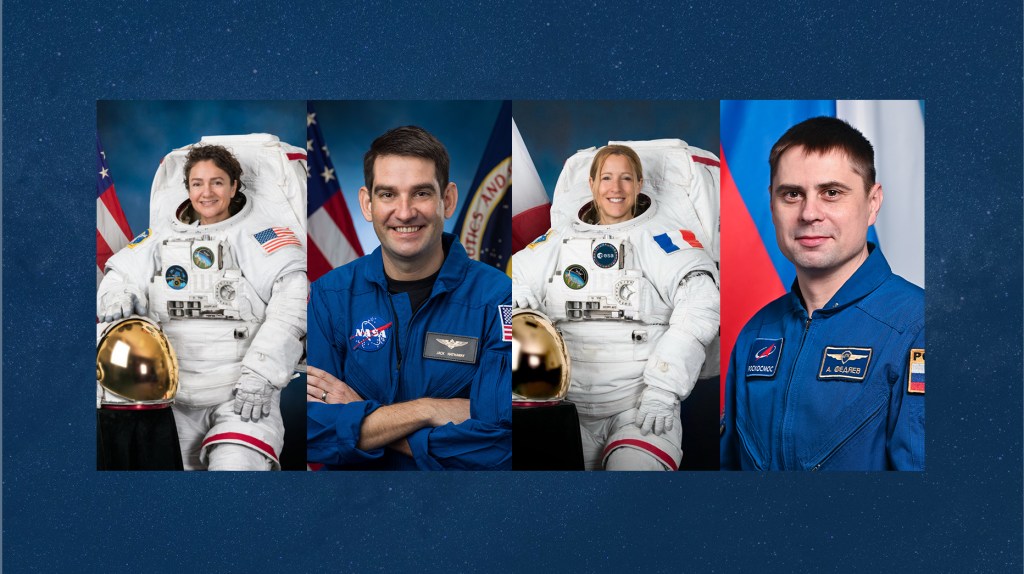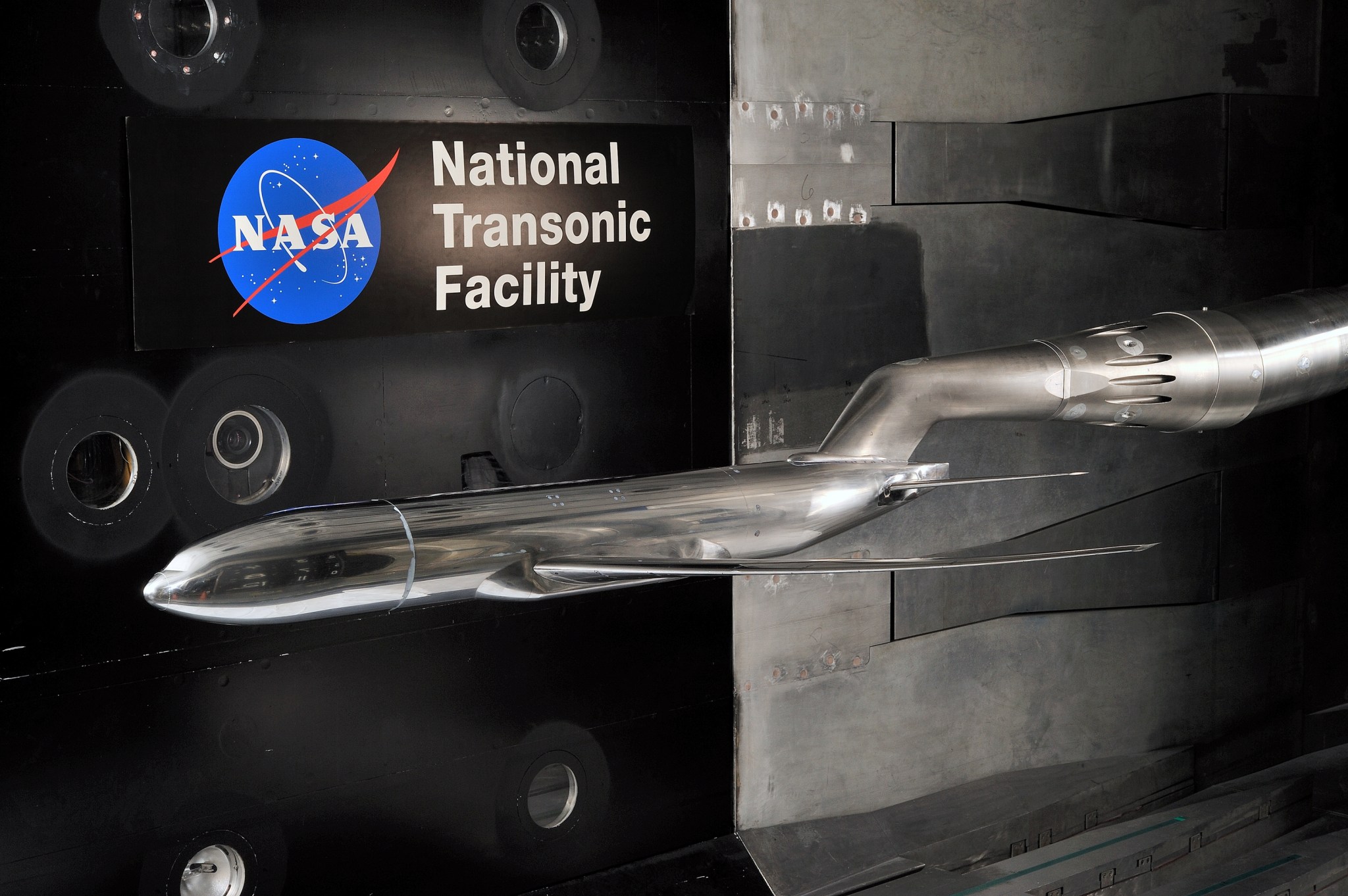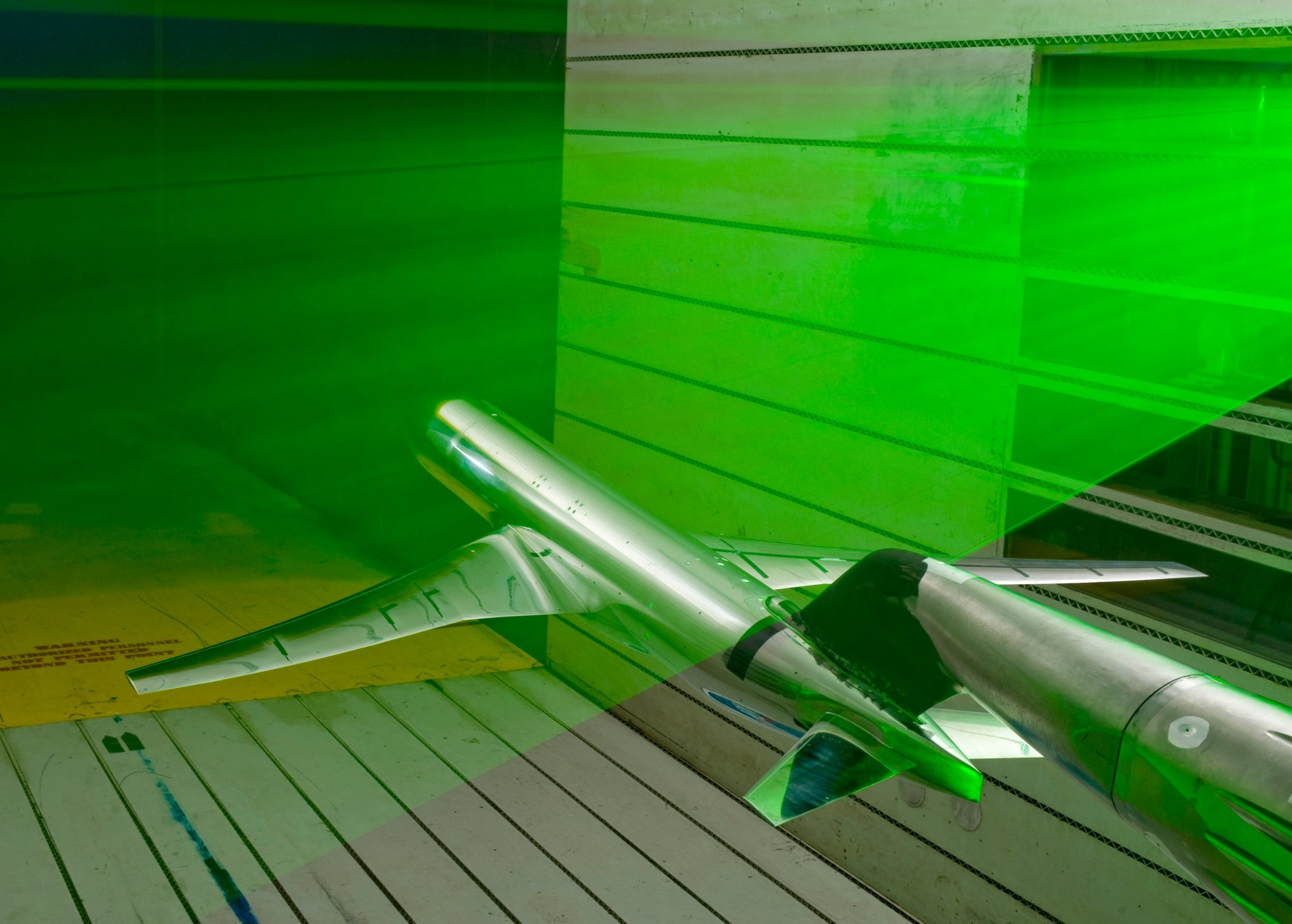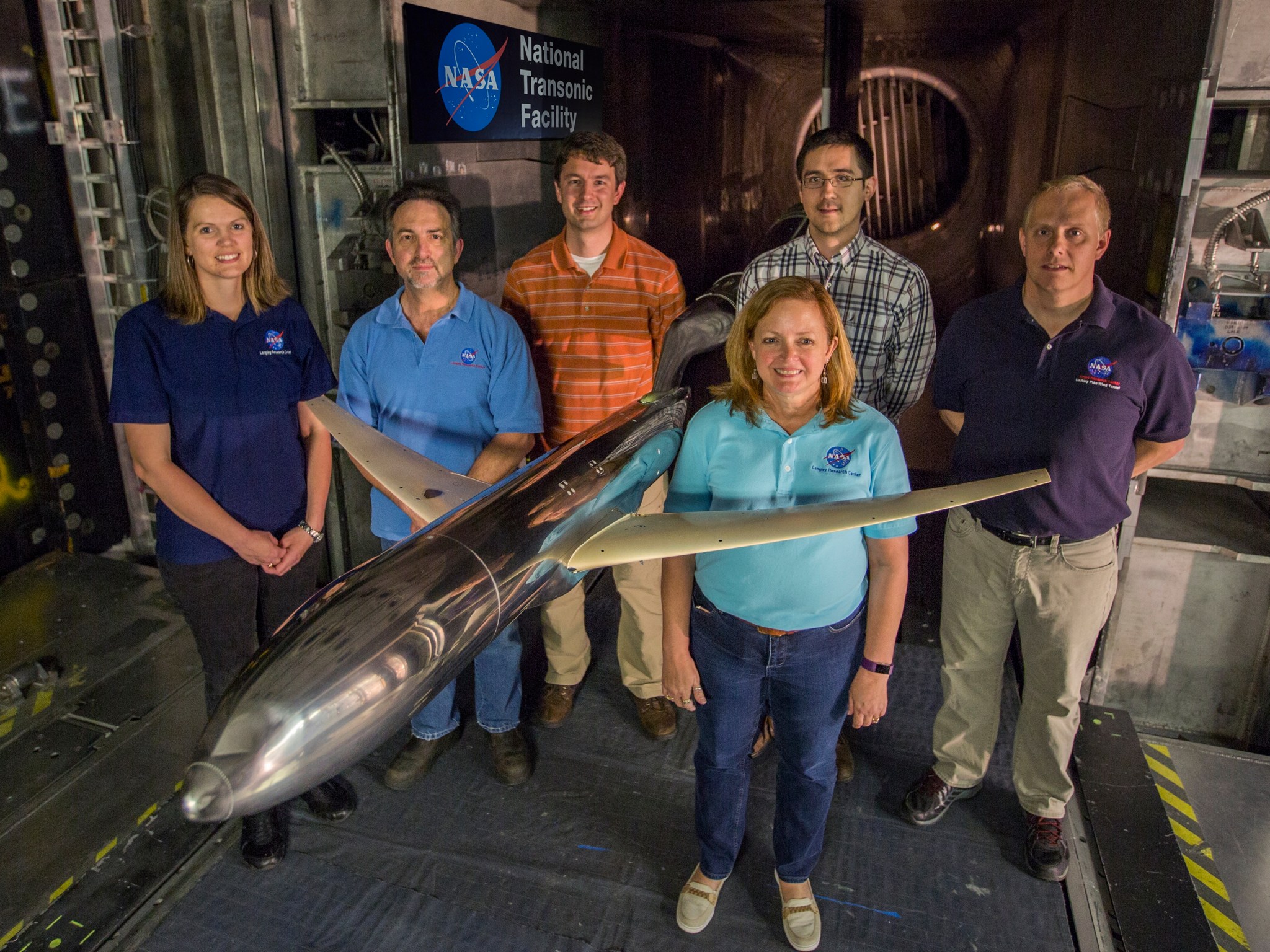A key to success with any international collaboration is that participants find a common language to work from.
For musicians, it’s notes on a page. For athletes, it’s the rules of the game. For diplomats, it really is language.
And for aeronautical engineers working to design, build and test aircraft of the future, at least one tool available to facilitate collaboration around the world is NASA’s Common Research Model, or CRM.
The CRM is a modern, commercial transport shape that exists both as a physical airplane model that can be tested in wind tunnels, and as a digital computer model that can be tested using Computational Fluid Dynamics (CFD).
“Having this shared baseline in the form of the CRM, which everybody can use, is something that helps the whole aviation community advance,” said Richard Wahls, the strategic technical advisor for NASA’s Advanced Air Vehicles Program.
Wahls and two colleagues – NASA’s Melissa Rivers and Boeing’s John Vassberg – were honored for their work on the CRM on May 3 with an International Cooperation Award from the American Institute of Aeronautics and Astronautics (AIAA).
According to the AIAA, the CRM “is a remarkable example of how aeronautical researchers and engineers in industry, government, and academia can work together across international borders sharing results on relevant problems for the benefit of all.”
Begun more than ten years ago, the CRM was initially intended as a tool to enable researchers to basically check each other’s work and make sure everyone was getting the same results when trying to predict the physics of a particular aircraft design.
“With CRM, we’re not trying to design a better airplane. We’re trying to be better at designing airplanes,” Wahls said.
An early concern was that the model be relevant to industry by incorporating all the latest design ideas for reducing drag, yet not include any features that could be considered proprietary to a company, or to not be shared outside the United States.
“We had to walk a very fine line to make that possible,” Wahls said.
It wasn’t long before the geometry of the CRM configuration proved its value as a starting point from which different researchers could compare the results of their CFD analysis, which then inspired another idea for using the CRM.
“As we gained experience using the CRM in wind tunnels, it became apparent it would also be a great tool for calibrating wind tunnels and checking the results obtained by testing the same model in different tunnels,” Wahls said.
Theoretically, after accounting for known differences between facilities, testing the same airplane model under the exact same conditions should come up with the same results.
“We were also seeking some data that could be uniquely acquired in each facility, and add to our open, publicly accessible database of experimental results,” Wahls said.
For those reasons the physical CRM aircraft was sent to different wind tunnels around the world.
Rivers, a research engineer at NASA’s Langley Research Center in Virginia, was primarily responsible for facilitating the international agreements and testing plans as the CRM wind tunnel model was sent to different nations.
“It’s been both challenging and very rewarding,” Rivers said. “I kind of feel guilty for getting an award for getting to travel the world.”
Among those challenges were the fact that the CRM model was too large for the wind tunnel in Japan, and too small for the wind tunnel in France. So, Rivers guided the research organizations in each country to solve the problem.
The solution: Japan constructed a CRM that was 20 percent smaller than the NASA model, while France built a model that was 50 percent larger.
As expected along the way, the language of science and the dialect of aerodynamic data proved to be the forces that bound together everyone who worked on the CRM.
“No matter what culture you come from, the basics of the data you were looking at from the wind tunnel, or from the computer, they’re the same,” Rivers said.
And where differences were detected, whether subtle or prodigious, an opportunity to learn something new presented itself.
Wahls said a third area in which the CRM has proven useful is as a technology baseline for the segment of the aviation design community that seeks to improve, or optimize, existing designs and check those ideas using CFD and other computational methods.
For example, engineers interested in the internal structure of an airplane can use the outer mold line of the CRM, apply a basic internal structure – the airplane’s skeleton – and then come up with a baseline result from the structural analysis.
Then, while keeping the shape of the CRM exactly the same, apply a more advanced internal structure – perhaps a skeleton with fewer parts, or made of different materials – and then run the tests and analysis again to see what the results show.
Like the other uses of the CRM, research organizations around the nation and the world can compare results, see if they get the same solutions, and then try to learn something positive if differences are found.
In fact, recent tests of the physical CRM model in different wind tunnels showed an unexpected difference, Rivers said. So, despite the almost generic nature of the design and the number of tests over many years, there still is much to learn by using the CRM.
“The research continues,” Rivers said. “It’s not over yet.”









































